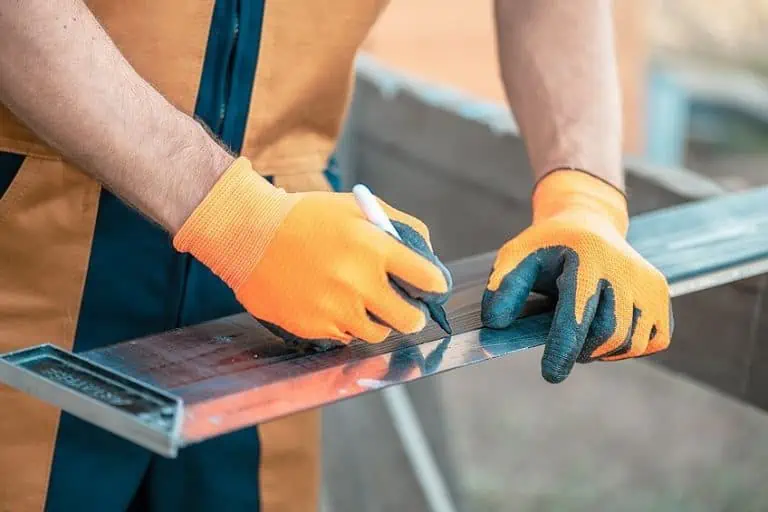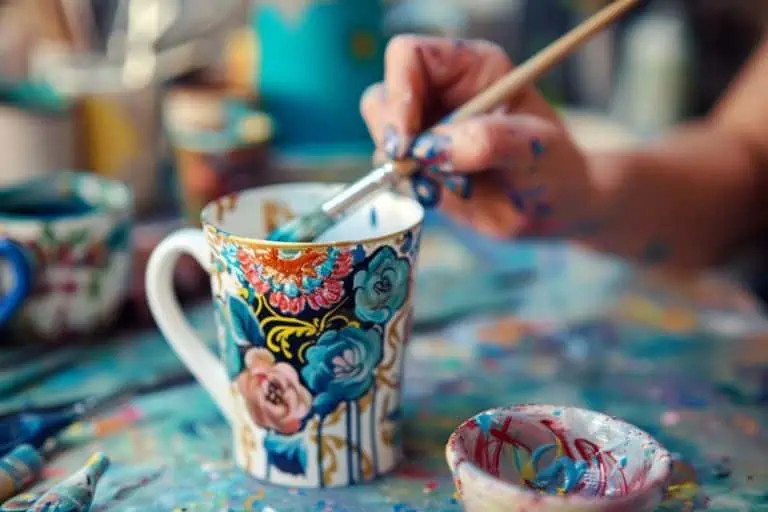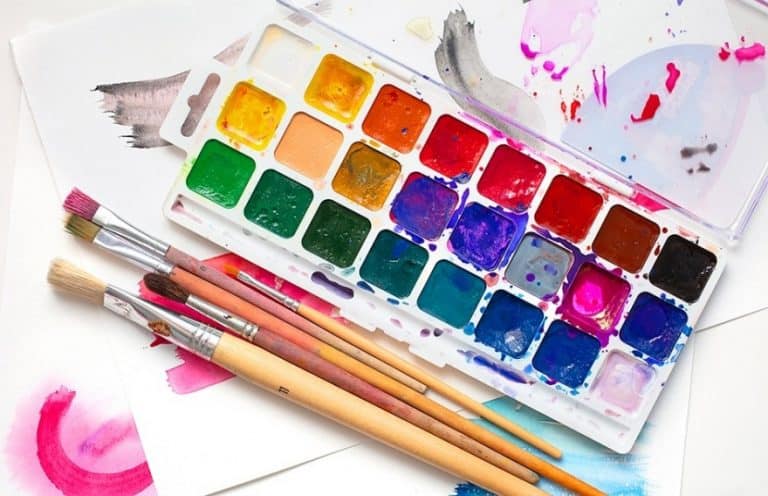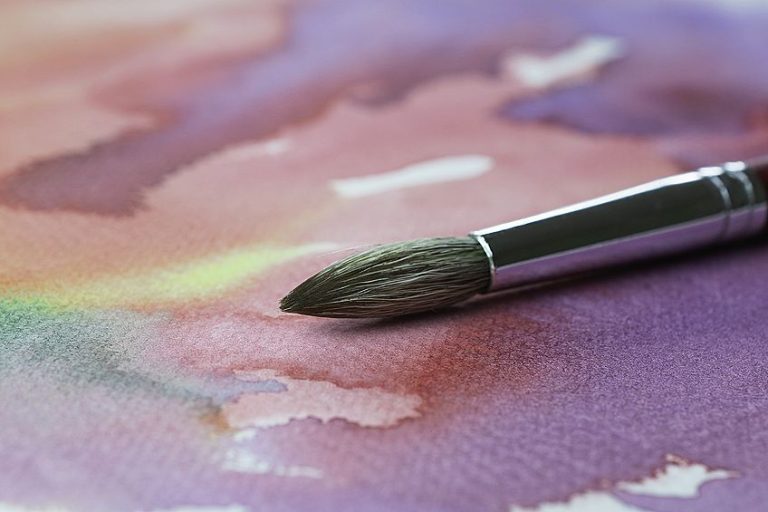Gouache vs. Acrylic – The Difference Between Gouache and Acrylic Paint
This post may contain affiliate links. We may earn a small commission from purchases made through them, at no additional cost to you.
So, you have decided to explore the world of painting, or maybe you already know all about acrylic paints and want to try something new like gouache. Let us then go on a short journey together to discover the difference between gouache and acrylic paints, how to go about using them, and what is acrylic gouache?
Table of Contents
What Is the Difference Between Gouache and Acrylic?
You should have at least heard of both acrylic paints and gouache, as they are fairly common amongst artists and crafters. These paints can usually be purchased at a craft store, so are not difficult to come by. However, the difficulty comes in deciding what paint to use, and are there major differences between gouache and acrylic paints? First, let us take a look at a short description of both paints.
Acrylic paints are well-known and a popular choice for many. Acrylics are water-based and consist of pigments that are dispersed within an acrylic polymer emulsion. There are three main components to acrylic paints including, as mentioned, the pigment, then you have your binder and a vehicle. The pigment is what provides color, the binder or acrylic polymer is what keeps the paint on the surface once dry, and the vehicle which carries everything, in this case, water. Once you apply the acrylic paint to your surface, the water evaporates, and the paint dries to form a type of plastic film layer.
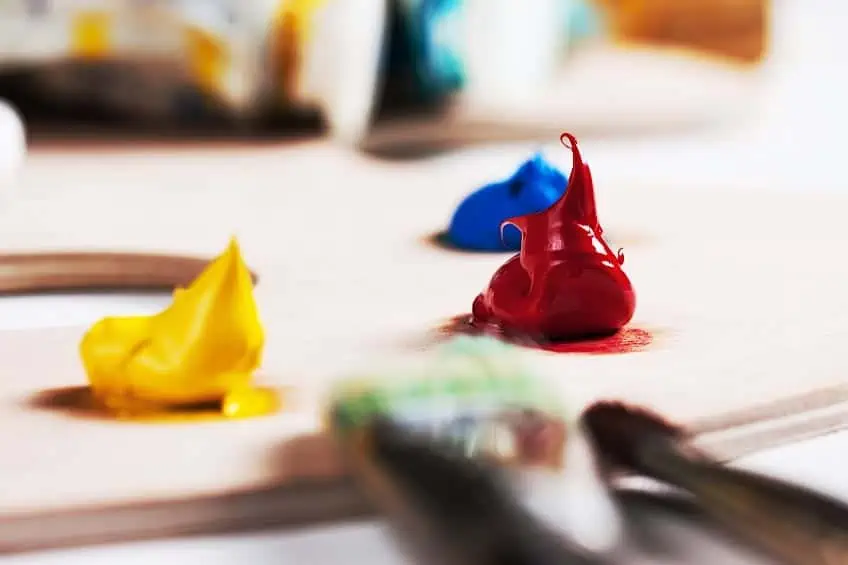
What is gouache paint? Gouache paints are also water-based, and if you are wondering how to pronounce the word, it can be spoken as “gwash”. Gouache is more part of the watercolor family than acrylics. The main difference between watercolors and gouaches is the paint’s transparency. Is gouache watercolor? While watercolors are transparent, gouache is more opaque. Gouache is quite basic and consists of pigment, water, and an Arabic gum binder. This binder is the same as the one found in watercolors. Next, a closer look at gouache vs acrylic and the main differences between the two.
Different Paint Binders
As we have mentioned, you will notice that the binder is different in each painting medium. Both are water-based and can be cleaned with water and soap. However, acrylic paints contain an acrylic polymer, while gouache has Arabic gum. The binder is the material that holds the pigment in the water and helps it stick to the surface once applied. The acrylic polymer is water-soluble when wet, but it dries to a type of plastic and becomes water-resistant.
The gouache does not become water-resistant and can be reactivated with water once dry.
Differences in Paint Durability
Since acrylic paint dries hard, to a type of plastic, it is more durable than gouache. Acrylic paint also handles light better and helps to repel dust more effectively. The paint is also water-resistant, but not waterproof, and it can be damaged if exposed to excessive moisture or water. You will need to waterproof items if you are going to leave anything painted with acrylics outside.
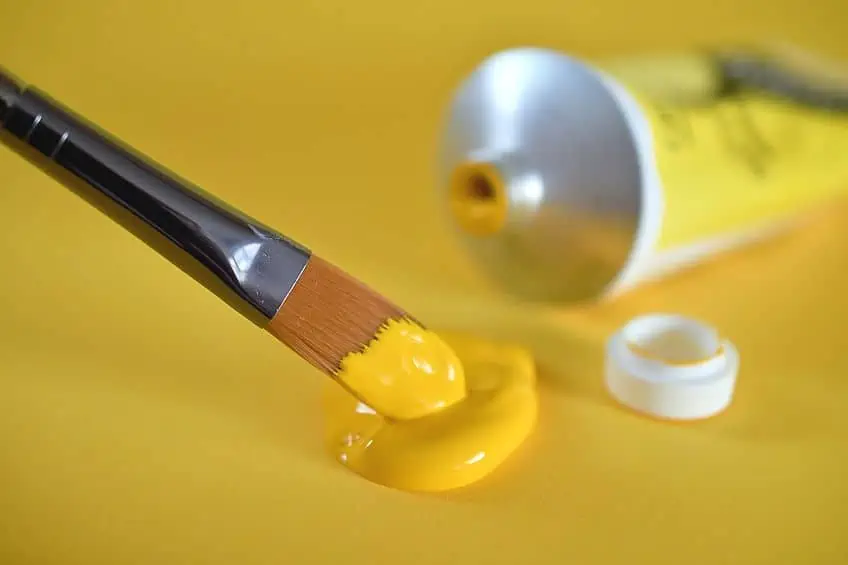
Gouache does not handle dust or light well and is not water-resistant. These disadvantages can make it difficult to display your artwork. Gouache paintings should preferably be framed and placed behind glass, away from dust, moisture, and light. However, being able to reactivate the gouache paint also has its advantages when applying certain painting techniques or fixing mistakes.
Paint Finish and Texture
Gouache, unlike watercolors, dries opaque and matte, but water can be added to provide that transparent watercolor effect. Although, it will not be quite equivalent to watercolors. When gouache paint is applied in too thick layers, it can cause a problem of cracking. Acrylic paint has a more gloss and opaque finish and can be applied in thicker layers for texture. You can apply more acrylic layers without problems, but when it comes to gouache, you run the risk of activating previous layers. The thicker body acrylics can produce similar results as oil paints, with textures. There are also various mediums as well as gels you can use to produce different textures.
Unlike gouache, if you make a mistake, the only thing you can do is paint over the dry acrylic paint or start over.
Suitable Painting Surfaces
When it comes to gouache vs. acrylic paint, various surfaces are better suited to each of them. Gouache is ideally suited to watercolor paper, Bristol, or Illustration board, and other thick paper. You can also use gouache on canvas, but the surface will need to be prepared first, and you should seal the painting afterward. Acrylic, on the other hand, is a bit more versatile and can be used on many surfaces including, plastic, canvas, wood, glass, paper, and metal.

Paint Drying Times
Since you cannot revive acrylic paint, and it dries quite quickly, it can be a lot more difficult to blend. Thin acrylic paint layers can take about 10 to 12 minutes to dry. A retarder can be used to help increase the working time or try using some water and mist over your work as you go. Gouache also dries fairly quickly but can take longer to fully dry, and it can be reactivated so you work on the painting again.
Gouache takes about 10 to 30 minutes to dry, or when all the water has evaporated, which could be affected by the surrounding temperature and humidity.
Application Methods
How to use gouache? Gouache is best applied using a paintbrush, the best brush would be a synthetic brush. When it comes to acrylic paints, they can be used with a paintbrush and other tools like a palette knife.
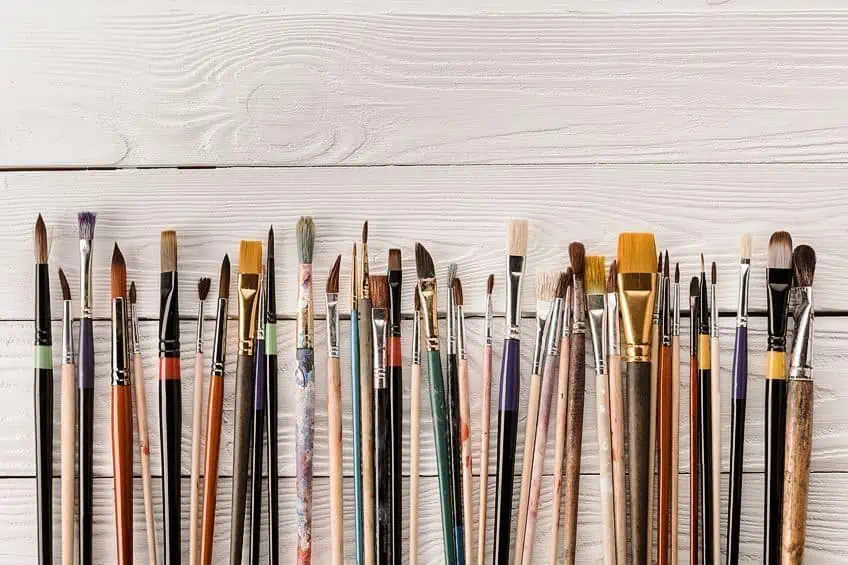
Cost of Paint
In general, gouache paints can cost a lot more than acrylic paints. This is because it contains a higher concentration of natural pigments, and the manufacturing process of the paint takes longer. Acrylic paints can vary in cost, as you get different grades of paint from professional or artist grade to student grade. The more professional paints contain more pigments and fewer fillers, which makes them more expensive.
Ultimately, your choice may depend on what you can afford and what you want to do with the paints.
Reviving Dry Paint
This is where gouache paint is more flexible than acrylics and can be reactivated after the paint has dried by simply adding more water. You can then make changes to your paintings. Acrylic paints are exactly the opposite, and you cannot change them once it becomes dry.
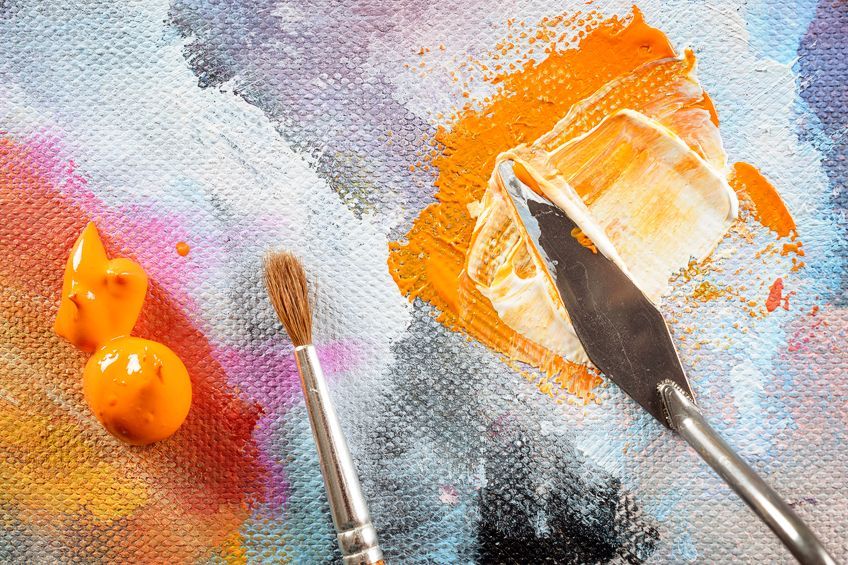
Paint Consistency
Gouache can have a paste-like consistency and may require a little water before using it. However, this may change from brand to brand. As mentioned, it can be used for a watercolor effect, by adding more water and thinning it out. However, it will still have some opacity. There are a few different types of acrylic paints like soft body, heavy body, and acrylic inks amongst others.
All of these have varying consistencies.
Paint Color Changes
Acrylic paints and gouache both change color from wet to dry. When it comes to gouache vs acrylic, darker gouache paints tend to dry lighter, while some of the lighter colors can also dry darker. Acrylic paints generally become darker as it dries, some going darker than other colors. This is something you should take into account, however, in many cases, it is very subtle.
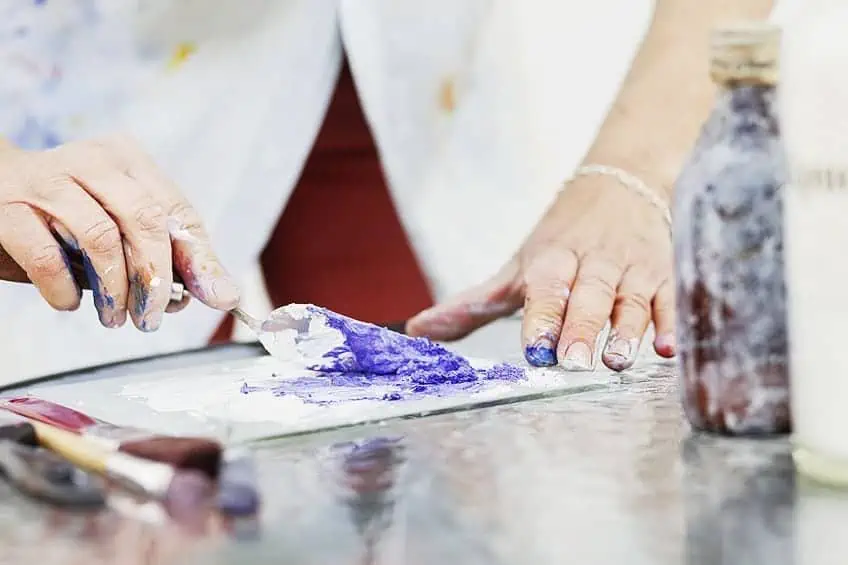
Comparison Table for Gouache vs. Acrylic
Now that we have covered the difference between gouache and acrylic, we thought it would be helpful for all this information to be placed in a convenient comparison table. Below are a few of the different paint features and their differences.
| Features | Gouache Paint | Acrylic Paint |
| Binder | Arabic gum | Acrylic polymer |
| Water-Resistant | Water-soluble even once dry | Water-resistant once dry |
| Durability | Less durable and needs proper care on display. Needs to be framed | Durable, but needs waterproofing for items outside. Framing not required |
| Suitable Painting Surfaces | Watercolor or thick paper | A variety of surfaces from paper to wood, metal, and plastic |
| Paint Finish and Texture | Dries opaque and matte. Too thick layers will crack | Dries glossy and opaque. Thick layers can add texture |
| Application Methods | Paintbrush | Paintbrush and other tools like palette knives |
| Reviving Dry Paint | Can be revived and reworked | Cannot be changed |
| Drying Times | Dries quickly, but blends well | Dries quickly, but is more challenging to blend |
| Costs | More expensive than acrylic paints | Expensive to cheaper options are available |
| Paint Consistency | Paste-like consistency that can be thinned | Depending on the type of acrylic paint, different consistencies |
| Fixing Mistakes | Easy to fix mistakes or lift previous layers | Difficult to impossible |
| Paint Color Changes | Dark colors may become lighter, while light colors can become darker | Dries darker |
Gouache vs. Acrylic: Which Is Better?
This is a personal choice and is determined by what you want to achieve. Both types of paint can be a good start for beginners. You might want to try out both of these paints to see which you prefer. Acrylics are cheaper and easy to work with and you only require some water and soap to clean up.
These paints also dry quickly, which can be both an advantage and disadvantage. The disadvantage is that any mistakes cannot be fixed. The more versatile acrylics that come in different consistencies can be used in a variety of projects because they can be applied to most surfaces, unlike gouache, which is more limited. Acrylic paints can be displayed more easily as it is more durable than gouache, which is more delicate and offers more of a matte, velvet finish.
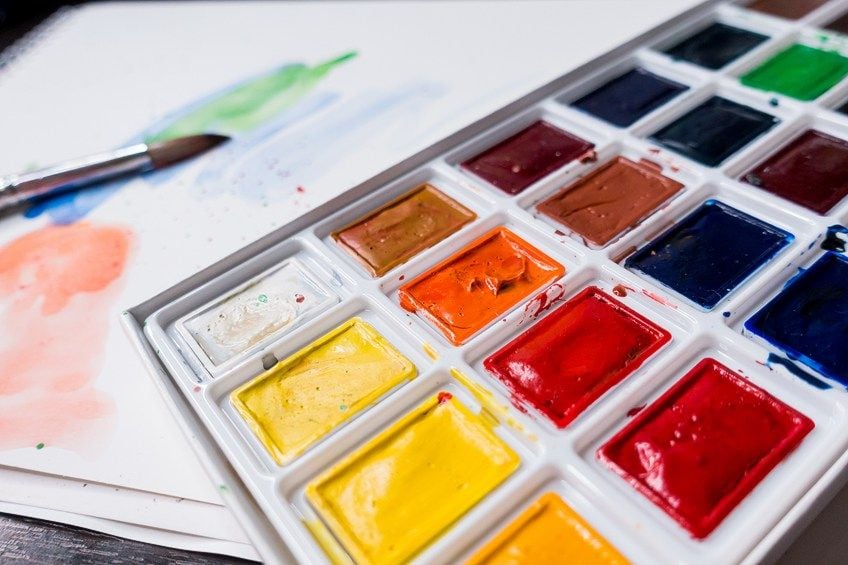
Gouache is expensive but is more natural than acrylics and is easy to work with. This paint also only needs some water to clean up. When painting with gouache it is more forgiving as you can work on it, even if the paint dries. So, mistakes can easily be fixed. Both are relatively non-toxic and produce little to no odors.
What is gouache paint used for? Gouache is used more by professional artists for its versatility and how it can imitate other mediums like acrylics and watercolors. However, it is used a lot in illustrations, posters, comics, and all kinds of professional design projects. Acrylic paints are for painting on canvas and are popular for various types of crafts as they can be applied to numerous surfaces.
Instead of using one or the other of these paints, why not try acrylic gouache.
What Is Acrylic Gouache?
This is a unique type of acrylic paint that has the same type of binder as acrylic paint but is made to look like the traditional gouache. The acrylic gouache has a creamy consistency, dries fast, can be layered easily, is lightfast, and dries to a matte finish, unlike the traditional acrylic paints. Since it has a similar binder, it cannot be reactivated like traditional gouache. When using acrylic gouache, brush strokes are also not prominent.
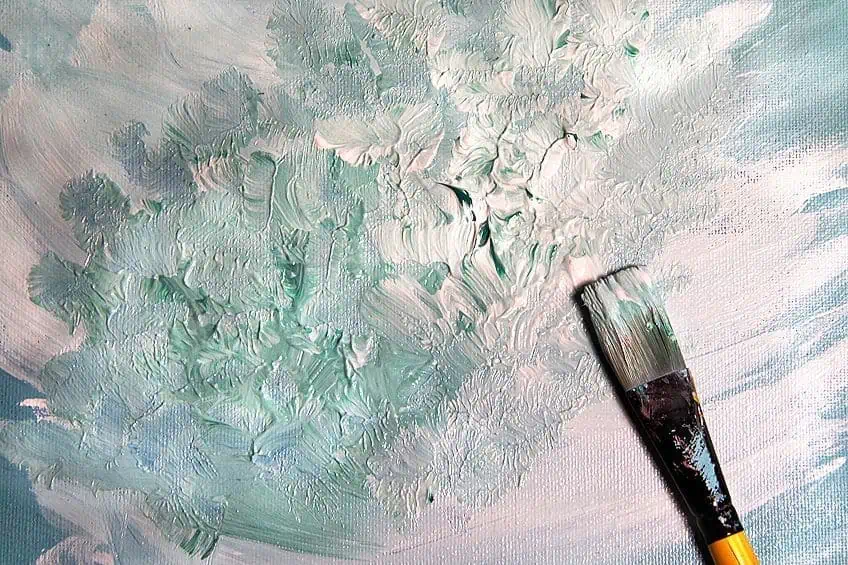
This means you can layer the paint without worrying about mixing the colors of previous layers. Also, as with acrylic paint, acrylic gouache will become water-resistant. Acrylic gouache can also be used on a variety of surfaces like acrylic paints, but it provides the look and feel of traditional gouache. So, it has characteristics from gouache as well as acrylic paints. Further features include its fluid application, high pigmentation, resistance to cracking, and permanent image. When working with acrylic gouache, you can use the paint straight from its container, unlike traditional gouache that requires a little water. You can still add some water to the acrylic gouache to make it a little transparent if you want. You can use acrylic gouache for various projects including the following.
- Illustrations
- Mixed media
- Painting fine art
- Solid color blocking
- Design
As with any art or craft products, they are not all made the same. Try not to mix brands, as the different manufacturers each have their own formulas. If you want more consistent work, stick to the same brand. Cheaper brands also add things like fillers into the paints, which could affect your final art pieces. Quality paints are what you need if you want the best finish.
Gouache vs. acrylic – which one is better? However, you also have acrylic gouache. Each of these painting mediums has its pros and cons. To make a decision on which to choose, it would be best to experiment with the various mediums to find the one that best suits you and your painting style. By doing this, you may even discover a whole new side to your painting experience.
Frequently Asked Questions
Is Gouache Watercolor?
The binder for both watercolors and gouache is the same, however, the gouache offers a matte, opaque finish. The texture of gouache is creamy and should go onto paper smoothly. You can add small amounts of water to make it more fluid. Gouache does not dry permanently like watercolors and can be reworked.
What Is Gouache Paint Used For?
Gouache paint is used a lot by commercial artists for things like comics, illustrations, posters, and other design work. Gouache paints can also be used by artists who travel a lot, for entire paintings, and backgrounds.
What Is Acrylic Gouache?
Acrylic gouache lies somewhere between acrylic and watercolor paints, as it dries opaque and water-resistant like acrylic, but has the same binder as watercolors, yet becomes water-resistant when dry. You can also use acrylic gouache on a variety of surfaces like acrylic paints.
Is Cleaning-Up Acrylic and Gouache Easy?
Cleaning up is easy for both, as both acrylic and gouache paints are water-based. All you need is some soapy water to wash all your equipment. However, when it comes to acrylics, you need to clean items straight away, as it dries hard and can be difficult to remove.
In 2005, Charlene completed her wellness degrees in therapeutic aromatherapy and reflexology at the International School of Reflexology and Meridian Therapy. She worked for a company offering corporate wellness programs for several years before opening her own therapy practice. In 2015, she was asked by a digital marketer friend to join her company as a content creator, and it was here that she discovered her enthusiasm for writing. Since entering the world of content creation, she has gained a lot of experience over the years writing about various topics such as beauty, health, wellness, travel, crafting, and much more. Due to various circumstances, she had to give up her therapy practice and now works as a freelance writer. Since she is a very creative person and as a balance to writing likes to be active in various areas of art and crafts, the activity at acrylgiessen.com is perfect for her to contribute their knowledge and experience in various creative topics.
Learn more about Charlene Lewis and about us.


